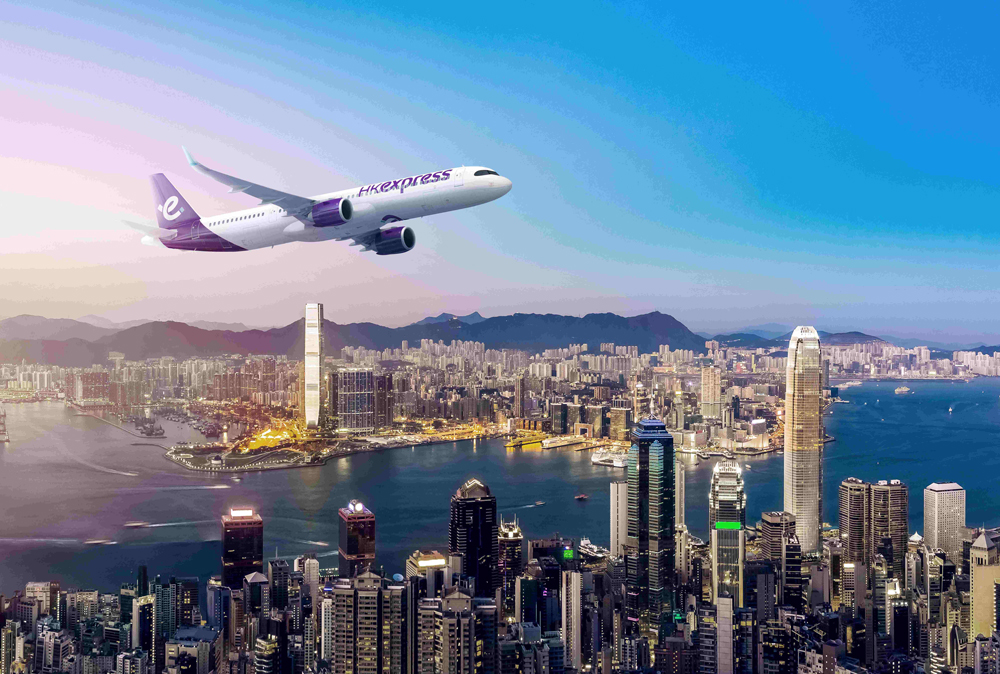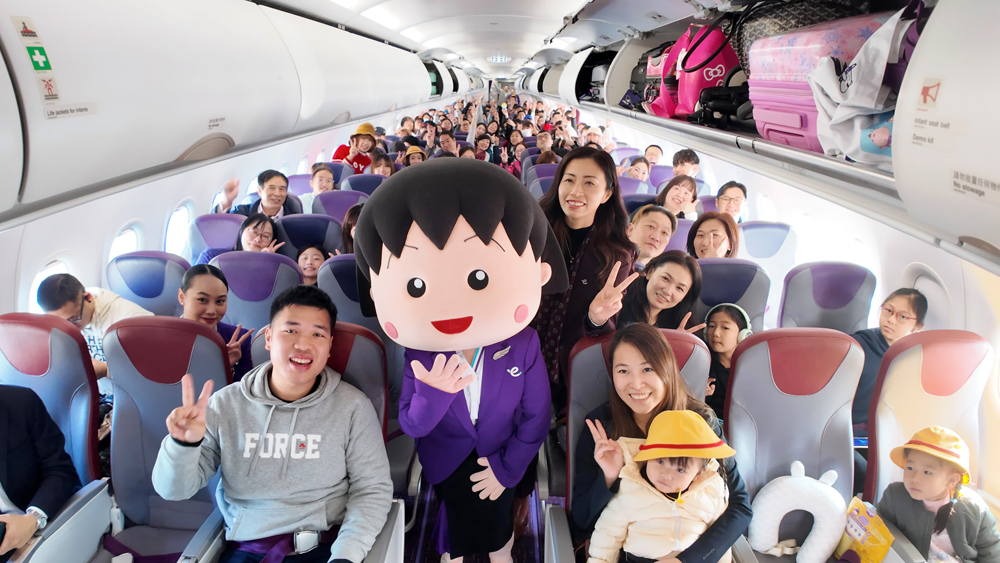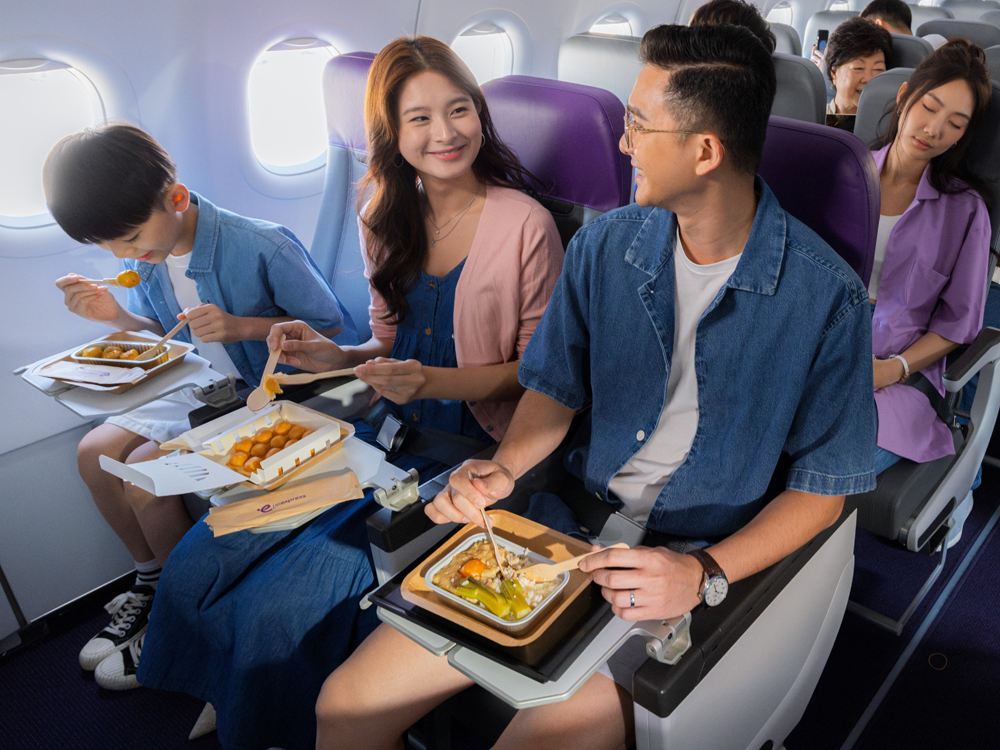Copyright © 2024 Swire Pacific Limited. All rights reserved.

We take to the skies with HK Express, Hong Kong’s only low-cost carrier (“LCC”) – and one which has been ranked among the world’s top five low-cost airlines by Airline Ratings. We hear why the airline is central to the Cathay group’s dual-brand strategy, and find out more about what has propelled HK Express’s phenomenal growth over the past two years, making it possible for travellers to embark on captivating, yet cost-effective journeys.
For many people, air travel to or from Hong Kong is synonymous with the premium airline Cathay Pacific. However, there is another airline striving to make an impact on the low-cost air travel market: HK Express.
If there’s one word that best sums up HK Express’s recent story, it is “growth”, with the carrier recently named the world’s fastest-growing airline by OAG, a provider of aviation and travel data. Since becoming part of the Cathay group in 2019, HK Express has gone from strength to strength. Last year, the LCC increased its total number of passengers carried by 40% to an impressive six million people. Today, that growth is continuing. Commitments to expand the fleet are in place. New destinations are joining the network. In 2024, the airline established nine new routes. In the first half of 2025 alone, another nine have already been added, covering the Chinese Mainland, Japan, South Korea, and Vietnam, with several of them being offered exclusively by HK Express.
Ronald Lam, Chief Executive Officer of the Cathay group and Chair of HK Express, says the airline fulfils a vital role in the group’s dual-brand strategy, with Cathay Pacific being the full-service premium carrier and HK Express being the LCC. “This approach ensures we are able to serve the different needs of a wide range of customers. We are confident that HK Express’s LCC business model can keep fares low and offer more destinations to our customers.”
Furthermore, HK Express forms an integral pillar of the Cathay group’s four lines of business, which also include premium carrier, cargo services and lifestyle products. By capturing all areas of the market, the Cathay group is fuelling its own growth and that of the wider Swire Group.

So how has HK Express managed to grow its network of routes so quickly? Jeanette Mao, HK Express’s Chief Executive Officer, says the answer lies in the airline’s ability to be agile and flexible. “Our ambition is to be the best LCC in Asia, and underpinning this is our ability to pioneer new destinations and create demand for them amongst our customers. Achieving this isn’t always straightforward, so if a new destination isn’t working, for whatever reason, we are agile enough to adapt our network and redeploy our resources somewhere else.”
A shining example of creating demand is HK Express’s extensive presence on routes to Japan. The airline offers flights to 13 destinations in the country, including nine flights per day to Tokyo’s two airports and five to Osaka. Yet it is HK Express’s ability to offer new experiences in second tier cities that is creating a buzz among customers – places like Shizuoka, Ishigaki, Komatsu and Takamatsu. “Being a first-mover in these destinations gives us the competitive advantage to spur demand by appealing to the adventurous spirit of our customers. But this pioneering mindset extends well beyond Japan. We also work with local governments, airports and tourism boards across our network to help market lesser-known locations to travellers from Hong Kong and the rest of the Greater Bay Area (“GBA”), which is a win-win for all,” says Jeanette.
The airline takes an innovative approach to customer offerings, and it knows its customers well. A growing segment of HK Express’s customer base comprises young people from other cities in the GBA, who favour short, action-packed trips where every second counts. “Many of these customers are looking to maximise their time away,” explains Jeanette. “Among the various competitive flight schedules we offer, a popular choice is our ‘red-eye’ flights, which leave late at night. These help customers make the most of their trips to Japan, South Korea or destinations in Southeast Asia, as there is minimal downtime.
“These flights benefit not just our customers, they are also smart business. In monetary terms, aircraft are our most valuable assets and red-eye flights boost how we are utilising our fleet. In turn, this allows us to offer more destinations and deliver value across our network. The results speak for themselves. Travellers from the wider GBA now make up 25% of our customer base. With a relatively young median age of 36, these flyers can take advantage of affordable, convenient travel that enables them to explore destinations only offered by HK Express. This has the added benefit of strengthening Hong Kong International Airport’s hub status, which is good for the economies of both Hong Kong and the wider GBA.”

For any LCC, the emphasis is on prioritising efficiency. At HK Express, this plays out through its “less is more” philosophy. Instead of including layers of services and products into the ticket price, the challenge is to identify what truly matters to customers, then focus all efforts on doing those things exceedingly well.
“We want to ensure that our customers are satisfied with the service we provide,” says Jeanette. “This can cover many touchpoints, such as price, their experience with us and even the food they select during a flight. Another really important area is our on-time performance, which is critical to both customer satisfaction and operational efficiency.”
Allowing customers to pay only for what they need gives them more flexibility about what they spend. “One of the innovations we have introduced is a range of new fare categories, which includes our Ultra Lite fare. Passengers can bring onboard one small item of hand luggage that fits beneath the seat in front of them, meaning they won’t stow anything in the overhead compartment so don’t need to pay for luggage they aren’t carrying with them. For the airline, there’s a significant operational benefit. By avoiding the pre-take-off scramble for overhead compartment space, there’s a dramatic reduction in the number of minutes lost to delays. Prior to the launch of the new fare categories, we recorded around 1,000 lost minutes per month. Now, we’ve got it down to 100 minutes. The new fare type has improved our on-time performance as well as the experience passengers have when they board our flights,” says Jeanette.
A key revenue stream for HK Express is the ancillary products it provides to customers, such as seat selection, baggage allowance in the cabin, insurance and food. In 2023, the airline began offering Hong Kong-style street snacks to showcase the city’s vibrant culture and passion for food, and has sold nearly half a million curry fish balls in that time. It has also secured exclusive partnerships with popular local brands that offer bubble tea, “soup-bursting” pork buns, and spicy, numbing soup noodles, to name just a few. Discerning travellers can now enjoy a taste of Hong Kong before they even land.
One thing, however, that HK Express always strives to provide more of, is safety. “It is the cornerstone of any airline, and that’s no different for an LCC like us,” says Jeanette. Indeed, thanks to its record on safety, HK Express was ranked the world’s safest budget airline by the website Airline Ratings earlier this year.

As you might expect from such a vibrant, bold brand as HK Express, the teams behind it are young. Youth aside, however, what makes them gel is a working environment that encourages innovation and creativity, where employees can contribute to decision-making, acting as one team. The airline also seeks to build a culture where employees feel valued and empowered. So, just as HK Express offers flexibility to its customers over seat choices, food and more, the airline allows its female cabin crew to choose the uniform they are most comfortable with – either traditional skirts and heels or trousers and sports shoes. This flexibility goes a long way to supporting crew members’ confidence and ensuring their comfort while at work.
During busy periods of network expansion, it is inevitable that teams must also grow to keep up the pace. In the past two years, the number of staff has increased by 70%, and in 2025, the carrier anticipates recruiting up to 500 new people, including cabin crew, pilots, engineers and IT professionals. To help meet demand, HK Express has already centred some of its recruitment efforts on the wider GBA, with campaigns being launched in Shenzhen, Zhuhai and Guangzhou. “The GBA isn’t just a vital customer base for us, it also represents a significant talent pool, which will further fuel our growth,” says Jeanette.
HK Express has its sights set on the future, so how will the carrier ensure it can continue to deliver success for the Cathay group and Swire? The approach is two-pronged, encompassing quantity and quality. The airline will keep adding new routes – particularly to the Chinese Mainland and Southeast Asia – as well as expanding its fleet, with 22 Airbus A321neo and A320neo aircraft due for delivery between now and 2029. The hunt for talent will continue unabated. On the qualitative side, operational efficiency will remain a key focus, including on-time performance, cost efficiency and aircraft utilisation. Continuously improving customer satisfaction and increasing revenue streams from ancillary products will also be important.
Another advantage for HK Express is the Three Runway System at Hong Kong International Airport, which is now fully operational. Not only will it be good for Hong Kong, it will also serve the wider GBA. A final word from Ronald: “Central to our future growth is our commitment to investing more than HK$100 billion, which coincides with the commencement of Three Runway System. Together, Cathay Pacific and HK Express will operate flights to more than 100 destinations around the world within 2025. I’m really excited about what the future holds, both for the Cathay group and our customers.”